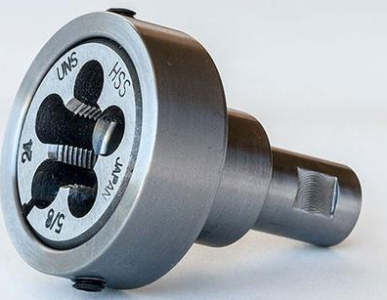I am having a blast with my new PM1030V lathe.
I have a puzzle...
It is a 1030. So, I guess I can machine a 10" diameter cylinder 30" long. Or at least approach those numbers.
I have a 4" diameter steel (sort of) cylinder 7" long. Heavy. I want to make a better cylinder from this stock. How hard could it be? Chuck it up and make sharf.
Well, my chuck with the outside jaws (the ones that grab by pushing out) can only grab a 3" cylinder on their inside. OK, switch over to the inside jaws. They can grab the 4" but less than a half inch of one end. (Remember, this stock is heavy--almost wanted to get out the shop crane to position it.). But, grabbing 1/2 ", even through everything is steel, and really tightening up the jaws--well it is crooked. Steady rest is too small to go around it. Follow rest doesn't support from the bottom. Tried to use the dead center on the tail stock.
OK, now the question--what sequence of adjustments does one do to get the mostly but only sort-of cylinder chucked up basically axially symmetric and ready to turn? I guessed at the center of the cylinder (the end has about 1/4" of gentle wave in it) for the dead center. Got a dimple there. Loosened chuck. Retightened. Clearly I was off of center. But wrongly located dimple was already there.
4-jaw chuck same problem. Face plate--ok, but how do you mount a 7" cylinder to it?
Any suggestions for a big heavy chunk of roundish steel like this?
-Bill
I have a puzzle...
It is a 1030. So, I guess I can machine a 10" diameter cylinder 30" long. Or at least approach those numbers.
I have a 4" diameter steel (sort of) cylinder 7" long. Heavy. I want to make a better cylinder from this stock. How hard could it be? Chuck it up and make sharf.
Well, my chuck with the outside jaws (the ones that grab by pushing out) can only grab a 3" cylinder on their inside. OK, switch over to the inside jaws. They can grab the 4" but less than a half inch of one end. (Remember, this stock is heavy--almost wanted to get out the shop crane to position it.). But, grabbing 1/2 ", even through everything is steel, and really tightening up the jaws--well it is crooked. Steady rest is too small to go around it. Follow rest doesn't support from the bottom. Tried to use the dead center on the tail stock.
OK, now the question--what sequence of adjustments does one do to get the mostly but only sort-of cylinder chucked up basically axially symmetric and ready to turn? I guessed at the center of the cylinder (the end has about 1/4" of gentle wave in it) for the dead center. Got a dimple there. Loosened chuck. Retightened. Clearly I was off of center. But wrongly located dimple was already there.
4-jaw chuck same problem. Face plate--ok, but how do you mount a 7" cylinder to it?
Any suggestions for a big heavy chunk of roundish steel like this?
-Bill
Last edited:


